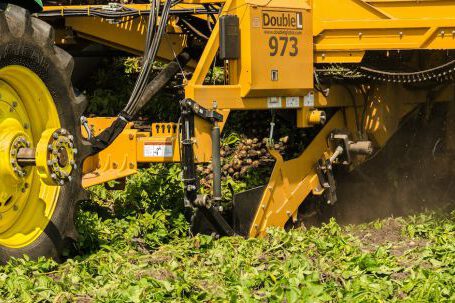Concrete and masonry saws are essential tools for any construction or renovation project. They can be used to cut through a variety of materials, including concrete, asphalt, brick, stone, and pavers. Whether you’re a professional contractor or a DIY enthusiast, having the right saw for the job can make all the difference.
In this guide, we’ll take a look at the different types of concrete and masonry saws available, the features to look for when buying a saw, and how to use them safely and effectively.
Types of Concrete and Masonry Saws
When it comes to cutting concrete and masonry, there are several types of saws to choose from. The most common types are:
- Circular Saws
- Masonry Saws
- Demolition Saws
- Tile Saws
- Chain Saws
- Walk-Behind Saws
- Table Saws
Circular saws are the most versatile and are commonly used for cutting wood, metal, and concrete. They typically have a diamond-tipped blade that is designed to cut through hard materials. Masonry saws are specifically designed for cutting masonry and concrete. They have a high-torque motor and a diamond-tipped blade that is designed to last longer and cut more efficiently than a circular saw.
Demolition saws are powerful saws that are designed to cut through thick material, such as reinforced concrete. They have high-torque motors and a diamond-tipped blade that is designed to cut quickly and efficiently. Tile saws are designed to cut through ceramic and porcelain tile. They typically have a water-cooled blade to prevent overheating and a table that allows you to make precise cuts.
Chain saws are designed for cutting through wood, but they can also be used to cut concrete and masonry. They have a long chain with sharp teeth that is designed to cut through hard material. Walk-behind saws are large saws that are designed to cut through thick material, such as concrete and asphalt. They are typically used by professional contractors. Table saws are designed for cutting wood, but they can also be used to cut through masonry and other hard materials.
Features to Look for When Buying a Saw
When shopping for a saw, there are several features to consider. Here are some of the most important ones:
- Power: Look for a saw that has enough power to handle the material you’ll be cutting. If you’re cutting through hard materials, look for one with a higher-torque motor. For softer materials, a lower-torque motor may suffice.
- Blade: Look for a saw with a diamond-tipped blade that is designed to last longer and cut more efficiently. Some saws also come with a water-cooled blade to prevent overheating.
- Safety: Look for a saw that has safety features such as a blade guard and anti-kickback device. These features can help prevent accidents and injuries.
- Durability: Look for a saw with a durable construction that can stand up to the rigors of the job. Look for one with a solid metal frame and metal parts that won’t easily break or wear out.
- Ease of Use: Look for a saw that is easy to use and has intuitive controls. Some saws come with a trigger lock to avoid accidental start-ups. Others have a variable speed control for more precise cutting.
Using a Concrete and Masonry Saw Safely and Effectively
Using a concrete and masonry saw can be dangerous if you don’t follow proper safety procedures. Here are some tips to help keep you safe:
- Dress appropriately: Wear safety goggles, gloves, and a dust mask to protect yourself from flying debris. Wear closed-toe shoes to protect your feet.
- Prepare the area: Make sure the area is clear of debris and people before you start cutting. Make sure the saw is firmly planted on the ground and that the blade is securely attached.
- Cut slowly: When cutting through hard material, always cut slowly and steadily. Going too fast can cause the blade to overheat and break.
- Check the blade: Inspect the blade regularly to make sure it’s not worn or cracked. Replace the blade if necessary.
- Be aware of your surroundings: Be aware of your surroundings and watch for any potential hazards. Don’t operate the saw near flammable materials or in wet conditions.
Conclusion
Concrete and masonry saws are essential tools for any construction or renovation project. When shopping for a saw, look for one with enough power to handle the material you’ll be cutting, a diamond-tipped blade for maximum efficiency, and safety features for added protection. When using a saw, always follow proper safety procedures and be aware of your surroundings. With the right saw and the right safety precautions, you can complete any project with ease.






